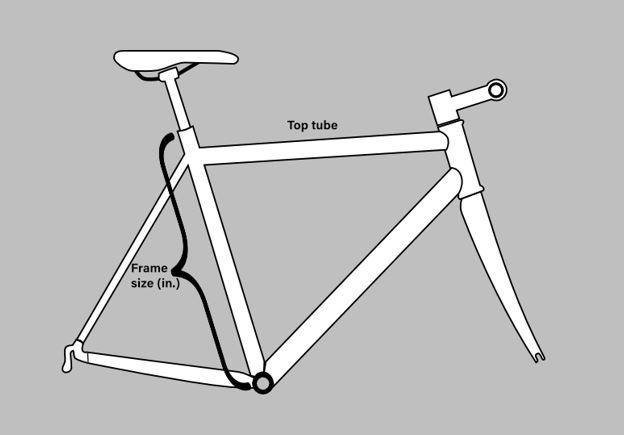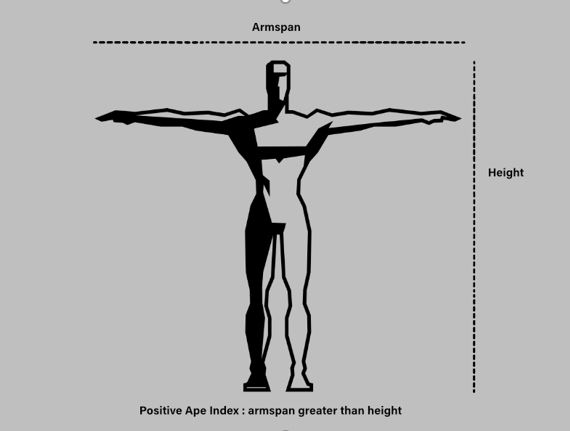Follow our comprehensive guide to calculating the right size for your next bike and adjust it for the perfect fit.
Size Hero: Ultimate Bike Sizing Calculator and Fitting Advice
QUICK SUMMARY: Follow our comprehensive guide to calculating the right size for your next bike and adjust it for the perfect fit.
in
Recommended Frame Size
Table of Contents
Why Bike Sizing Matters
With more bikes than ever before being sold remotely, it’s vital to order with confidence when it comes to size. At best, getting it wrong will cause inconvenience and expense in the case of a return but, at worst, it could cause back or wrist pain, discomfort and increase the risk of an accident because of impaired control. Beyond that, ergonomic factors will reduce your efficiency, and you’ll have to work even harder to get up those hills! For safety reasons especially, the temptation to buy a bike which is too big for a child to ‘grow into’ must be resisted. In this article we’ll cover how to find the right bike size fit, both for adult and children’s bikes

How Adult Bikes Are Sized
Before you can even think about riding off into the sunset on your steel horse, it pays to invest some time in ensuring your ride’s not going to leave you saddle sore after a few miles. There really is no substitute for taking accurate measurements and using our calculator to get it right the first time. A bike’s frame size refers to the distance (in inches) from the center of the crank axle to the top of the seat tube (see diagram).

Bike Frame Standover Height
If you’ve ever seen a biker at a traffic stop standing on one leg with the other slung over the top tube, chances are they have the wrong size bike. Ideal sizing should allow you to stand with both
feet flat on either side of the bike and still have at least one inch of clearance between the top tube and your body. That’s why your first measurement is always your inseam (or inside leg). Together with your overall height and the type of bike you’re looking for (road, hybrid or mountain), that’s all the information you need for our calculator to work out your ideal bike size.
Why Bike Frame Sizes Differ By Type
That’s right: the size of bike you need can change depending on its type. To allow the rider greater control over difficult terrain, a mountain bike requires more standover clearance and a smaller frame than a road bike. Mountain bikes let the rider sit in an upright position, while racing bikes typically have low slung handlebars, causing the rider to lean forward and evenly distribute weight. A hybrid bike (combining a narrower wheel profile than an MTB but retaining some of the features which make it capable of handling off road trekking) sits somewhere between the two. As an example, an adult 5’ 10 tall with an inseam of 31’ would require a road bike with a 21” frame, a hybrid bike with a 20” frame and a 16” frame mountain bike. Other cases can be seen in the table below.
In Between Sizes?
If your inseam or height measurement falls on the half inch, you’ll need to take an extra measurement to help decide which size frame would best suit your body shape. The length of your upper body will determine how long your reach is. The charmingly named ‘Ape Index’ is calculated by comparing your outstretched arm span to your height (see diagram). Only if your arm span is greater should you plump for the bigger size.
Picking the Right Bike Size for Your Child
First of all, you need to know that, in contrast to how adult bikes are sized, children’s bike sizes relate to the diameter of the wheels – all the way from 12” (found on most balance bikes) to 24” which is usually regarded as the last stop for juniors before they qualify for adult bikes. Of course, there are sometimes very striking size differences between kids who are the same age so, wherever possible, get your child to actually sit on the bike so you can assess its suitability.
As an alternative (or even as a scientific check for your own observations), our handy size calculator is programmed to cater for children too. Just as with adult bikes, you’ll need their inseam and height measurements but then you’ll be in a much better place to make an informed choice. One final point to note is that bike frame design can vary greatly from manufacturer to manufacturer. Above all, you need to ensure that the bike’s standover height is lower than your child’s inseam. This is especially important for youngsters who may still be lacking confidence on two wheels.
The minimum seatpost height is the other key dimension. On balance bikes this should be no higher than your child’s inseam. On a first pedal bike it can be as much as an inch higher than their inseam but by the time he or she is a confident cyclist it’s fine to go for a minimum seatpost height which is up to 3 inches more than their inseam.
How to Adjust Your Bike for the Perfect Fit
Any good retailer will be happy to show you the best way to set your bike up but, in the event that you have to do it yourself, here’s what you need to know.
Step 1: Adjusting Seat Height
The ideal way to do this is while the bike is stationary, so if you’ve got a bike training stand, you can use it for stability. Otherwise get someone to hold it for you. Place the balls of your dominant foot on one pedal in the six o’clock position. The ideal fit should mean that there is a slight bend in your knee, so lower or raise the seat post until it’s just right.
Step 2: Adjusting Seat ‘Layback’
The saddle’s lateral position is called the layback. To check that you have the right layback, sit on your bike with your feet on the pedals in a level position. Hold a weighted line down over the front of your kneecap. The weight should fall just in front of the pedal axle.
Step 3: Adjusting Reach
A bike’s reach measurement will decide how far you need to lean forward to hold your handlebars. This isn’t something you should adjust by changing the seat’s layback though. Instead this can be finely tuned by raising or lowering the head tube (the main pivoting tube which goes down to the forks). While reach eventually comes down to personal preference, a good guide is for your back to lean forward at about 45,° and your arms to extend at roughly 90° down from your shoulders to your handlebars.
Summary
We believe that using our bike calculator and following the advice we’ve given here will set you up for every success on the saddle. However, the best advice is always to listen to your body. If you’re getting aches and pains somewhere along the way you might need to tinker with your setup and adjust something.
Finally, it’s worth noting that there are bound to be minor manufacturing differences between brands which may affect how their size frame stacks up against a competitor’s. With prices continuing to rise, it makes sense to do your research (and you’re here already, so well done!) Fortunately, some brands allow you to do more than just ‘kick the tires’ before you part with your money so keep an eye out for retailers who’ll let you have a proper road trial in exchange for some ID or for MTB events like the ones at Outerbike which let you test bikes in the most demanding conditions.
